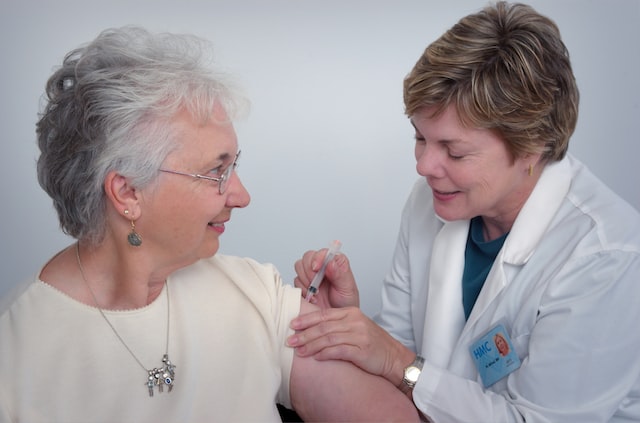
Palliative care and hospice care are both specialized healthcare models that focus on palliation, or relief of symptoms, associated with serious, debilitating illnesses. Such symptoms may include pain, difficulty breathing, nausea, or the need for additional emotional support. Palliative care and hospice care focus on improving the patient’s quality of life.
Palliative care is a component of hospice care, but hospice care is not always part of palliative care. In other words, hospice care comprises of palliative care to treat symptoms while palliative care stands alone as a care model. Hospice and palliative care were once thought of as just the elderly, however, about 20% of U.S. hopsical patients are under the age of 65 (American Hospice Foundation).
Palliative Care
Palliative care, while focusing on symptom management, also allows for aggressive treatment. For example, an individual with cancer may choose palliative care for the relief of pain and nausea, as well as undergo chemotherapy and radiation. With palliative care, an individual has access to resources throughout the process and can make informed decisions about their care. This synergetic relationship between symptom management and aggressive treatment often yields better results than aggressive treatment alone. If aggressive treatment is no longer feasible or desired, the individual may opt for hospice care.
Hospice Care
Hospice is a model of care that focuses on the end-of-life when aggressive treatments are no longer indicated or desired. It focuses on palliation of symptoms to allow terminally ill individuals to fully live the rest of their life to the greatest extent possible. Hospice goes beyond a medical model, considering all aspects of the end-of-life experience: physical, emotional, psychosocial, and spiritual. A team of specially trained professionals collaborate with the patient and their family to address end-of-life issues and goals for care.
Does Hospice Speed Up the Dying Process?
It is a mistake to call hospice “giving up.” Research indicates that people receiving hospice care may live longer than those who do not receive it. A study published by the Journal of Pain and Symptom Management (March 2007) found that Medicare beneficiaries with either congestive heart failure or certain cancers lived 29 days longer on average than those who did not receive hospice services (NHPCO 2010). People commonly misconceive that hospice care providers give terminally ill individuals medications, such as morphine, that hasten death. While medications like morphine are initiated, the dosage prescribed is at the lowest quantity needed to provide comfort. “Start low and go slow” is the motto hospices operate by when prescribing medications.
The Death Experience and Hospice Care
Death can be a beautiful and peaceful experience. I have many special memories of my time as a hospice nurse, but there is one that stands out: I received a call to go to a patient’s house on Christmas night. It was pitch dark and I was in the middle of nowhere. There were many people standing outside the home as I approached. I walked into a small home with about 50 people inside – I was barely able to get to the patient! The patient was an elderly gentleman who was nearing the end. I talked to his wife about what had occurred that led to the call. As she explained the decline, family members argued in the background. Some thought the patient needed to go to the hospital while others stated that nothing more could be done and that it was his wish to be comfortable.
I did my assessment and told the family that the patient was probably minutes from death. I am not sure what came over the family, but they all surrounded the patient’s bed and started to sing, “For He’s a Jolly Good Fellow.” The patient’s breathing became shallow and slow. As they sang the last line, “which nobody can deny,” the patient took a long, deep breath, let it out, and left this earth.
Immediately after, various wind chimes sounded. The wife stated, “He always loved wind chimes.” A death that I initially thought would be fraught became one of the most beautiful deaths I can recall. The family forever has that memory of their loved one’s death; one that was peaceful, and calm, and brought them together.
Generations LifeCare Management and End-of-Life Care
When facing a serious illness, Generations LifeCare Managers can help and support patients and their families throughout the journey. A Generations LifeCare Manager provides assessment and monitoring, advocacy, education, resources, problem-solving, and support while you make difficult decisions. A Generations LifeCare Manager is also a resource to the family, providing information, explanations, support, and communication. To find a professional in your area, contact us.
Disclaimer: This blog is for informational purposes only and does not constitute, nor is it intended to be a substitute for, professional advice, diagnosis, or treatment. Information on this blog does not necessarily reflect the official positions of Generations LifeCare Management and is provided “as is” without warranty. Always consult with a qualified professional with any particular questions you may have regarding your or a family member’s needs.
About Generations LifeCare Management: Discover the best way to age gracefully with Generations LifeCare Management – the leading expert in senior care. Our expert professionals are dedicated to helping you live your best life.
Contact us today to find a Generations LifeCare expert in your area.
Generations LifeCare Management – The Best LifeCare Management in Redding
Redding, CA 96003
United States (US)
Phone: (530)-780-6022
Email: Selina@generationslifecaremanagement.com
URL: https://generationslifecaremanagement.com








